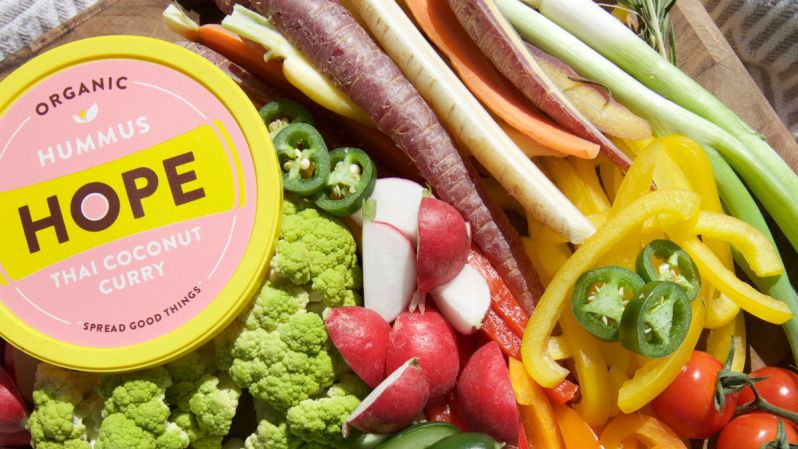
In the past three decades, hummus has solidified its place in the pantheon of healthy snack options (sorry, kale chips, you’re not there quite yet). Packed with protein, the Middle Eastern spread goes great with vegetables, sandwiched between crackers, slathered on wraps, and just on the end of a spoon.
No matter how you’ve consumed hummus, you probably know the basic flavors. You’ve got your plain (usually with that hint of lemon and spices), the garlic version, and the roasted red pepper hummus.
But what about those of us who want more from hummus? What if you’re seeking new flavors when you sit down to dip some carrot sticks into something?
Well, Hope Hummus, created by Colorado-based Hope Foods, is set to save the day. It really doesn’t matter what sort of flavor you’re into — sweet, savory, hot, etc. — because Hope produces around 10 different types of hummus for every palate. Each variety is gluten-free, GMO-free, and vegan, so short of having an allergy to specific ingredients, pretty much anyone can eat them (and by eat, we mean devour).
Below, we’ve rounded up the flavors we think you need to try.
Black Garlic
For the person who wants to stick to the usual, but better, black garlic is the way to go. Boasting a warmer flavor profile than your run-of-the-mill garlic, this is perfect on pizzas and more.
Kale Pesto

Not everyone loves kale, but it seems that those that do, really love kale. This mix provides a little bit of Italian flair to the hummus and can easily be mixed in with pasta for a filling, delicious meal.
Thai Coconut Curry

If you’re looking to really branch out, you’ve got to go with the Thai Coconut Curry. A little sweet and a little spicy — you’ll be looking for the nearest Thai takeout joint so you can order some spring rolls to dip.
Red Jalapeño

Sometimes you need a kick in the taste buds. Well, not a kick, but a forceful nudge. There’s a nice amount of heat here without the hummus being overpowering.




